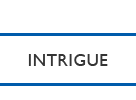This has been a question posed by society for hundreds of years as a way for us to reflect on our lives, our influence, and our purpose. I am sure given the opportunity we would all like to be a fly on the wall at our own funeral. But with new advances in technology, have you ever thought that in a small way, you could be? And I am not talking about the fact that your body will be present, but what if you could actually have a voice, a real presence? Carl Minardo and his partner believe they have come up with the answer.
They were inspired by the infamous film, Star Wars. They thought, what if you could do a hologram, but in a mausoleum? They took their idea and started a company called AIM (Artistry In Motion) Holographics, where they hope to change the future of funerals by giving people the ability to prerecord their own eulogy with 3D holographic technology. “It gives you an opportunity to talk to the people who are important in
your life and, really, let them know how much they meant to you,” Carl explains.
The website explains further, "Have you ever wished you had some tangible memory of a passed loved one? Yearned to see your parents or grandparents one more time? To hear their voice, see their smile, listen to their stories? This is what drives AIM. We want you to create your life’s legacy so your grandchildren, great grandchildren and beyond will remember who you are, your family’s timeless values and what family means to you. Our company makes those emotion, memories, and messages eternally available."
Carl says the eulogy or any other message or video is recorded in a studio and featured on projectors both small and large. “It’s as realistic as you can get without it being you. Other than you coming up and being here, this is the closest it’s going to be in 3-dimension,” he said.
With so many people opting for cremations today, Minardo sees this as an opportunity to work with funeral homes to help them maintain some revenue, and to tap into the 76-million baby boomers driving the funeral business.
I will say, I think it would be a nice surprise to make an "appearance" at my own funeral and say a few words to all my friends and loved ones! So what do you think? Would you utilize this high-tech way to keep your legacy alive?
The website explains further, "Have you ever wished you had some tangible memory of a passed loved one? Yearned to see your parents or grandparents one more time? To hear their voice, see their smile, listen to their stories? This is what drives AIM. We want you to create your life’s legacy so your grandchildren, great grandchildren and beyond will remember who you are, your family’s timeless values and what family means to you. Our company makes those emotion, memories, and messages eternally available."
Carl says the eulogy or any other message or video is recorded in a studio and featured on projectors both small and large. “It’s as realistic as you can get without it being you. Other than you coming up and being here, this is the closest it’s going to be in 3-dimension,” he said.
With so many people opting for cremations today, Minardo sees this as an opportunity to work with funeral homes to help them maintain some revenue, and to tap into the 76-million baby boomers driving the funeral business.
I will say, I think it would be a nice surprise to make an "appearance" at my own funeral and say a few words to all my friends and loved ones! So what do you think? Would you utilize this high-tech way to keep your legacy alive?










